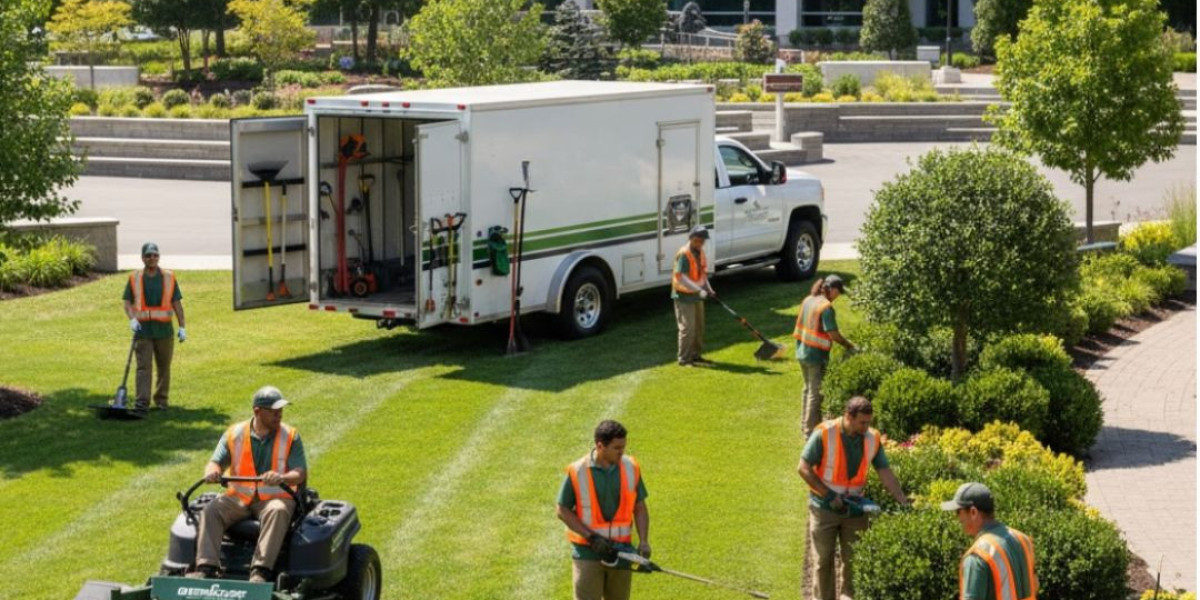In today’s real estate environment, property owners are increasingly looking beyond purely aesthetic enhancements. Sustainability, resilience, and long-term cost efficiency are more than buzzwords they are practical priorities. When selecting a turn‑key green partner for their outdoor space, landlords, commercial managers, and residential developers must weigh multiple factors.
A turn‑key green partner is a company that takes full responsibility for a project: from design through installation, and often maintenance. This kind of partnership relieves a property owner from juggling multiple contractors. Choosing the right partner requires careful consideration to ensure long-term value and environmental benefit.
Below, we walk through the critical criteria property owners should examine, helping align practical considerations with ecological goals.
Defining Clear Goals
The first step is defining what “green” actually means in context. For some, it may simply involve native plantings or drip irrigation. For others, it could include rainwater harvesting, compost systems, or alignment with a green-building framework.
Clarity on objectives allows property owners to evaluate prospective partners based on alignment with their vision. A well-defined goal also helps discuss trade-offs: high-performance sustainability measures may require higher upfront costs but often deliver long-term savings through reduced maintenance or lower water consumption.
Assessing Experience and Expertise in Sustainable Landscaping
Experience matters significantly when it comes to green design and implementation. Property owners should look for partners who have completed projects similar in scale, climate, and function to their own.
When reviewing potential partners, consider:
Do they have experience with large commercial campuses or residential communities?
Have they implemented water-efficient irrigation, rain gardens, or xeriscaping? Xeriscaping, in particular, is a sustainable technique using drought-tolerant plants to reduce water use.
Do they rely on in-house teams or subcontractors? In-house teams often provide greater cohesion and quality control.
Some property owners exploring landscaping service naturally evaluate firms such as World of Pranaa, which demonstrate both technical expertise and a consistent approach to integrating greenery with architecture.
Sustainability Practices
A true turn‑key green partner embeds sustainability into every stage, not just plant selection. Key practices include:
Water conservation: Smart irrigation, rainwater harvesting, rain sensors, or water-smart landscape design.
Eco-friendly materials: Organic fertilizers, biodegradable mulch, low-toxicity pest control, and composting.
Biodiversity: Native plants, pollinator-friendly species, and design strategies that encourage wildlife.
Waste management: Recycling garden waste, reusing trimmings for mulch, and responsible disposal of materials.
Ask prospective partners to explain their sustainability philosophy. Are these practices standard across projects, or only occasional enhancements?
Financial and Long-Term Value Considerations
Green projects often require higher initial investment, but long-term benefits can be substantial:
Reduced water bills through efficient irrigation
Lower maintenance costs due to resilient plants and compost-based soil systems
Increased property value thanks to appealing, well-designed outdoor spaces
Enhanced occupant satisfaction, which can reduce tenant turnover
A reliable partner should provide a financial breakdown including installation, projected maintenance, expected savings, and potential payback. Lack of transparency on long-term value is a warning sign.
Licenses, Insurance & Certification
Legitimacy is essential. Ensure the partner holds appropriate licenses and insurance to protect against liability, worker safety issues, and regulatory compliance.
If pursuing environmental certification, choose a partner familiar with green-building frameworks and sustainability standards. Their experience can help streamline the certification process.
Quality of Communication and Transparency
A turn‑key green partner should foster a collaborative relationship. Key indicators of strong communication include:
Involving the owner in design decisions
Explaining complex systems like rainwater harvesting in accessible terms
Providing a detailed project timeline and regular updates
Transparency about suppliers, costs, and trade-offs
Open communication ensures that sustainability goals are properly implemented and that expectations are managed.
References, Testimonials & Site Visits
Due diligence is critical. Ask for references from past clients and, if possible, visit completed projects. Observing a site that has been maintained over time provides insight into long-term performance and the partner’s ability to handle challenges.
Positive feedback demonstrates reliability and helps anticipate how the partner will manage maintenance, unforeseen weather impacts, and other practical issues.
Turn‑Key Integration: Design, Build & Maintenance
The primary advantage of a turn‑key partner is integration. You avoid managing separate contractors for design, installation, and maintenance.
Evaluate:
Whether the partner offers a design-build model, which streamlines communication and timelines
Whether long-term maintenance is included or available post-installation
Whether the partner provides training or guidance for the property’s own facilities team
Integrated management ensures a cohesive approach to sustainability and reduces the risk of misalignment between design and upkeep.
Risk Management & Contingency Planning
Sustainable landscapes do not eliminate all risks. Property owners should understand how the partner handles:
Weather delays
Plant failure or disease
Cost overruns
Changes in water availability regulations
A clear risk-management plan, with built-in contingencies, safeguards the investment and ensures resilience.
Alignment with Property Brand and Values
The chosen green partner should reflect the property’s brand, mission, and stakeholder expectations.
For corporate properties emphasizing sustainability, partners with measurable green practices help achieve environmental reporting goals
For residential properties, a partner who considers tenant experience and community engagement can enhance the overall appeal
Commercial developments benefit when landscapes are functional, visually appealing, and ecologically responsible
Incorporating these factors ensures that outdoor spaces contribute positively to both the environment and the property’s reputation.
Conclusion
Selecting a turn‑key green partner for your property is a strategic decision that combines sustainability, practicality, and long-term value. By defining green goals, evaluating experience and sustainability practices, ensuring transparent communication, and confirming alignment with property values, owners can identify a partner who delivers meaningful results.
When thoughtfully executed, such collaborations transform outdoor areas into vibrant, resilient spaces that lower costs, enhance aesthetics, and contribute to ecological health ultimately creating a lasting asset for the property.
FAQs
Q1: What is a turn‑key green partner?
A turn‑key green partner manages the entire lifecycle of a landscaping project — from design and sourcing to installation and maintenance — so the property owner does not need multiple contractors.
Q2: Are sustainable landscaping projects more expensive initially?
They may require higher upfront costs for irrigation, specialized plants, or certification, but long-term savings in maintenance, water usage, and property value often offset the initial investment.
Q3: Can turn‑key green services suit small residential properties?
Yes. Even small gardens can benefit from integrated irrigation, native planting, and eco-conscious design.
Q4: How can I verify a green partner’s reliability?
Review their portfolio, check references, confirm licenses and insurance, and assess how well they communicate trade-offs, costs, and long-term maintenance.
Q5: What risks exist with sustainable landscaping, and how are they managed?
Risks include plant failure, system breakdowns, and cost overruns. Experienced partners mitigate these with risk-management plans, maintenance schedules, and contingency budgets.








